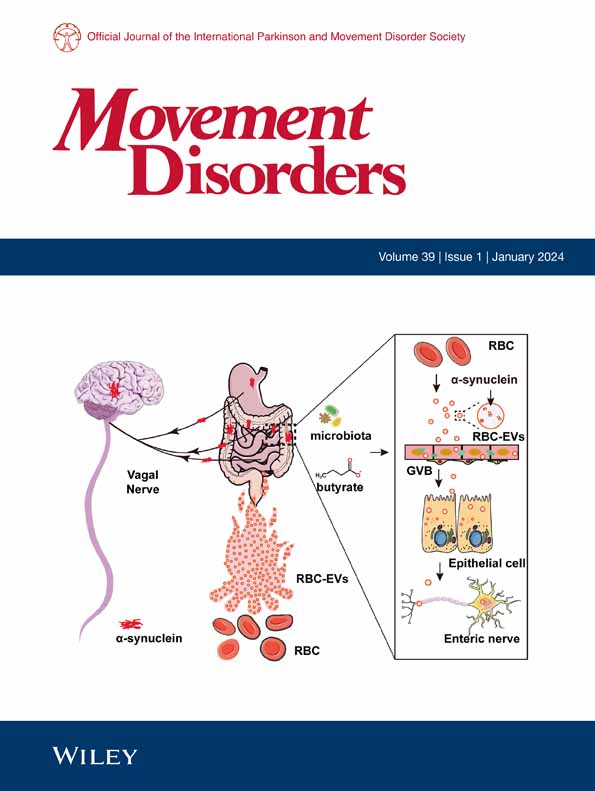Bart E.K.S. Swinnen MD, PhD, Colin W. Hoy PhD, Simon J. Little MD, PhD
求助PDF
{"title":"适应性深部脑刺激治疗帕金森病非运动症状?","authors":"Bart E.K.S. Swinnen MD, PhD, Colin W. Hoy PhD, Simon J. Little MD, PhD","doi":"10.1002/mds.30212","DOIUrl":null,"url":null,"abstract":"<p>Non-motor symptoms are prevalent, disabling, and difficult to treat at all stages of Parkinson's disease (PD). Whereas current deep brain stimulation (DBS) for PD targets motor symptoms, quality of life improvement, or lack thereof, is often largely determined by non-motor symptoms. So far, the effect of DBS on non-motor PD symptoms is insufficient, and neuromodulation targeted specifically at improving non-motor PD symptoms has been largely unaddressed. In this review, we provide a comprehensive overview of the effect of DBS on non-motor PD symptoms and discuss DBS-induced non-motor side effects including apathy and hypomania. We highlight the distinct neuroanatomical and temporal dynamics of these non-motor PD aspects. With the recent emergence of sensing-enabled DBS devices, we propose that research into responsive neuromodulation targeted specifically at non-motor symptoms is now feasible and timely. We outline potential non-motor adaptive DBS (aDBS) strategies that could be tested with currently available hardware. We conclude by highlighting important challenges that would need to be addressed for implementing aDBS for non-motor symptoms in PD. These include physiomarker validation, optimization of aDBS algorithms and control policies, the need for technological innovations, and incorporating ethical considerations. This review aims to provide a roadmap for clinicians and researchers to accelerate the development of non-motor aDBS in PD. © 2025 International Parkinson and Movement Disorder Society.</p>","PeriodicalId":213,"journal":{"name":"Movement Disorders","volume":"40 9","pages":"1759-1777"},"PeriodicalIF":7.6000,"publicationDate":"2025-07-18","publicationTypes":"Journal Article","fieldsOfStudy":null,"isOpenAccess":false,"openAccessPdf":"","citationCount":"0","resultStr":"{\"title\":\"Towards Adaptive Deep Brain Stimulation for Non-Motor Symptoms in Parkinson's Disease?\",\"authors\":\"Bart E.K.S. Swinnen MD, PhD, Colin W. Hoy PhD, Simon J. Little MD, PhD\",\"doi\":\"10.1002/mds.30212\",\"DOIUrl\":null,\"url\":null,\"abstract\":\"<p>Non-motor symptoms are prevalent, disabling, and difficult to treat at all stages of Parkinson's disease (PD). Whereas current deep brain stimulation (DBS) for PD targets motor symptoms, quality of life improvement, or lack thereof, is often largely determined by non-motor symptoms. So far, the effect of DBS on non-motor PD symptoms is insufficient, and neuromodulation targeted specifically at improving non-motor PD symptoms has been largely unaddressed. In this review, we provide a comprehensive overview of the effect of DBS on non-motor PD symptoms and discuss DBS-induced non-motor side effects including apathy and hypomania. We highlight the distinct neuroanatomical and temporal dynamics of these non-motor PD aspects. With the recent emergence of sensing-enabled DBS devices, we propose that research into responsive neuromodulation targeted specifically at non-motor symptoms is now feasible and timely. We outline potential non-motor adaptive DBS (aDBS) strategies that could be tested with currently available hardware. We conclude by highlighting important challenges that would need to be addressed for implementing aDBS for non-motor symptoms in PD. These include physiomarker validation, optimization of aDBS algorithms and control policies, the need for technological innovations, and incorporating ethical considerations. This review aims to provide a roadmap for clinicians and researchers to accelerate the development of non-motor aDBS in PD. © 2025 International Parkinson and Movement Disorder Society.</p>\",\"PeriodicalId\":213,\"journal\":{\"name\":\"Movement Disorders\",\"volume\":\"40 9\",\"pages\":\"1759-1777\"},\"PeriodicalIF\":7.6000,\"publicationDate\":\"2025-07-18\",\"publicationTypes\":\"Journal Article\",\"fieldsOfStudy\":null,\"isOpenAccess\":false,\"openAccessPdf\":\"\",\"citationCount\":\"0\",\"resultStr\":null,\"platform\":\"Semanticscholar\",\"paperid\":null,\"PeriodicalName\":\"Movement Disorders\",\"FirstCategoryId\":\"3\",\"ListUrlMain\":\"https://movementdisorders.onlinelibrary.wiley.com/doi/10.1002/mds.30212\",\"RegionNum\":1,\"RegionCategory\":\"医学\",\"ArticlePicture\":[],\"TitleCN\":null,\"AbstractTextCN\":null,\"PMCID\":null,\"EPubDate\":\"\",\"PubModel\":\"\",\"JCR\":\"Q1\",\"JCRName\":\"CLINICAL NEUROLOGY\",\"Score\":null,\"Total\":0}","platform":"Semanticscholar","paperid":null,"PeriodicalName":"Movement Disorders","FirstCategoryId":"3","ListUrlMain":"https://movementdisorders.onlinelibrary.wiley.com/doi/10.1002/mds.30212","RegionNum":1,"RegionCategory":"医学","ArticlePicture":[],"TitleCN":null,"AbstractTextCN":null,"PMCID":null,"EPubDate":"","PubModel":"","JCR":"Q1","JCRName":"CLINICAL NEUROLOGY","Score":null,"Total":0}
引用次数: 0
引用
批量引用


 求助内容:
求助内容: 应助结果提醒方式:
应助结果提醒方式:


